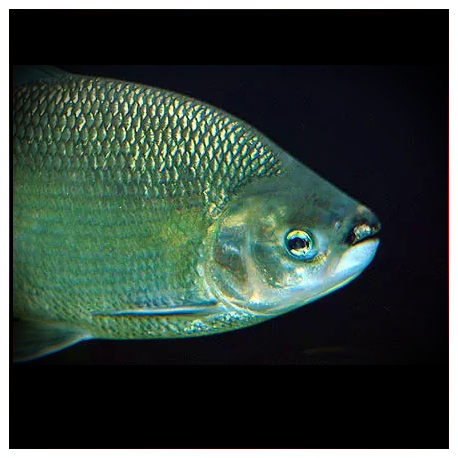More info
Datasheet
| Minimum Tank Size | 793 litres / 209.49 US gallons |
| Maximum Size | 45.0cm / 17.72inches |
| Temperature | 22°C / 71.60°F - 26°C / 78.80°F |
| Hardness | 1-15ºdH |
| pH | 5.5-7.5 |
General Description
The Red-Tailed Brycon (Brycon Cephalus) is a member of the Characidae family, specifically Bryconinae. It is characterized by a streamlined body shape and a mouth full of tiny, sharp teeth, indicating its predatory nature. This species, reaching up to 45.0cm in size, is known for its impressive appearance and reputation as a hard-fighting sport fish in certain native habitats.
Aquarium Setup
To create a suitable environment for the Red-Tailed Brycon, a tank of at least 793 litres is recommended. Due to its pelagic and riverine nature, the tank should have a good flow of well-oxygenated water. Ideal water conditions include a temperature range of 22-26°C, pH of 5.5-7.5, and water hardness of 1-15°dH. Decorate the tank with sand substrate, driftwood branches, and smooth rocks to provide hiding spots and shelter. Additionally, ensure the aquarium is well-covered as the Red-Tailed Brycon is known to be an excellent jumper.
Behaviour
The Red-Tailed Brycon is a dynamic and predatory fish that should be housed with tankmates carefully selected for their robustness and speed. Suitable companions include Cichla sp., other robust cichlids, larger characins, cyprinids, and catfish. This species is naturally shoaling and thrives in groups; however, some intraspecific aggression is expected as individuals establish a pecking order. Keeping at least 5 or 6 Red-Tailed Brycons together can help minimize bullying tendencies within the group.
Feeding and Diet
In the wild, the Red-Tailed Brycon is an opportunistic feeder, consuming small fish, aquatic invertebrates, fruits, nuts, and seeds. In captivity, it shows a preference for meaty foods but generally accepts a variety of live, frozen, and dried foods. Offer a diverse diet that includes prawns and live earthworms to ensure proper nutrition and feeding satisfaction for the Red-Tailed Brycon.
Reproduction & Dimorphism
Reproduction of the Red-Tailed Brycon has not been achieved in captivity due to its complex migratory spawning cycle in nature. Sexually mature females are believed to have a thicker body compared to males, although definitive information on sexual dimorphism is lacking.
Habitat and Distribution
Native to the Upper Amazon basin in Peru, Bolivia, and Brazil, the Red-Tailed Brycon prefers inhabiting the central, flowing parts of white and black water rivers. It can be observed resting in loose shoals near riverbanks under vegetation cover, as well as in flooded forests, and várzeas - lakes and pools left behind after floodwaters recede.

